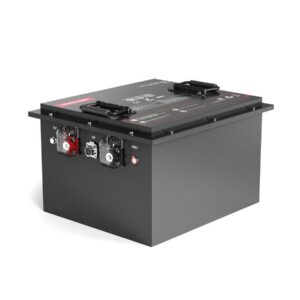
What are the disadvantages of LiFePO4 batteries?
LiFePO4 batteries, while valued for safety and longevity, face limitations including poor low-temperature performance (capacity drops by 55% at -20°C), lower energy density (150 Wh/kg vs. 200+ Wh/kg for NMC), and higher manufacturing costs due to complex synthesis. Consistency issues in large-scale production and patent restrictions further hinder widespread adoption in high-performance EVs.
Are Duracell Car Batteries a Good Choice for Your Vehicle?
How does low-temperature performance affect LiFePO4 batteries?
LiFePO4 cells suffer severe capacity loss below 0°C, with 3500mAh batteries degrading to 500mAh after 100 cycles at -10°C. Pro Tip: Preheating systems (like Tesla’s software) mitigate this but add 10-15% energy overhead. Example: BYD Han EVs lose 40% winter range despite battery insulation layers.

Below freezing, lithium-ion diffusion slows dramatically in LiFePO4’s olivine structure. At -20°C, internal resistance triples, reducing usable capacity to 45% of nominal. While nano-coating improves surface conductivity, it doesn’t resolve bulk material limitations. Automotive solutions like active thermal management (costing $800-$1,200 per pack) partially offset this but can’t eliminate winter range anxiety. Transitionally, hybrid systems combining LiFePO4 with supercapacitors show promise for cold-start scenarios.
Why is energy density a limitation for LiFePO4?
With 1.3-1.5 g/cm³振实密度, LiFePO4 packs occupy 20-30% more space than NMC equivalents. For EVs, this translates to either reduced range (300km vs. 450km) or heavier chassis reinforcement.
The iron-phosphate crystal structure inherently limits theoretical capacity to 170mAh/g, versus 274mAh/g for NMC811. While carbon coating improves conductivity, it further reduces volumetric energy density. In practice, a 75kWh LiFePO4 pack weighs ~550kg compared to 450kg for NMC. However, new cell-to-pack designs recover 15% space efficiency through prismatic cell stacking. Isn’t this trade-off acceptable for stationary storage where weight matters less?
| Metric | LiFePO4 | NMC |
|---|---|---|
| Volumetric Energy | 325 Wh/L | 700 Wh/L |
| Cycle Life @80% DoD | 3,500 | 1,200 |
What manufacturing challenges increase LiFePO4 costs?
Sintering LiFePO4 requires oxygen-free furnaces at 650-750°C, consuming 35% more energy than NMC production. Iron impurities from reduction reactions also demand rigorous quality control.
The multi-step synthesis—precursor mixing, spray drying, and annealing—has 85-90% yield rates versus 95%+ for LCO. Patent royalties add $5-8/kWh, making mid-sized 60kWh packs $300-$480 pricier. Transitionally, BYD’s blade-cell approach reduces material waste by 9% through optimized electrode cutting. But can these innovations offset rising lithium carbonate prices?
Battery Expert Insight
FAQs
Can LiFePO4 batteries explode?
Thermal runaway risk is 60% lower than NMC, but faulty BMS can still cause venting. Always monitor cell balancing in >100V packs.
Are LiFePO4 batteries recyclable?
Yes, but recovery yields only 92% lithium vs. 98% for cobalt-based batteries. Specialized smelting processes add $50/ton processing costs.
